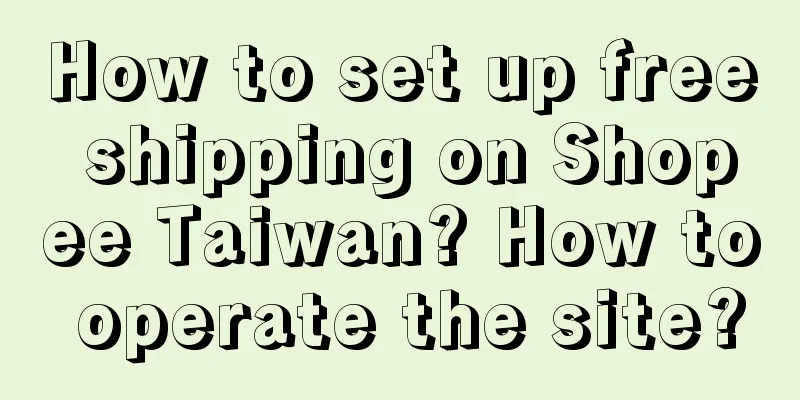Label your brand and break the dilemma of homogeneity!

In this era of scarce and highly fragmented attention, the public is often attracted by the ever-changing entertainment content, and the interactive touchpoints between brands and consumers are becoming increasingly complex and diverse. Therefore, building and accumulating long-term brand assets has become a new challenge for brands. Although short-term marketing can help brands quickly attract traffic and attention, it is often difficult to promote in-depth and lasting brand-user relationships. So, how can we find a path for sustained growth for brands in the contemporary environment? Perhaps, tailoring labels for brands is a good direction. 1. Label your products to achieve brand differentiationBrand labels and brand logos have similar functions: they are both brand assets, and they are both short and concise expressions of brand characteristics, with their own recognition. At the same time, brand labels can be brand slogans, slogans, logos, or keywords related to the brand, used to convey the brand's unique selling point, emotional connection, or brand promise. How can brands make their labels keep pace with the times, constantly adapt to the development of the times and changes in user needs, and achieve penetration into the target population? First of all, it is worth mentioning that a label is more of a symbol that is recognized and actively spread by consumers under the guidance of the brand; or it is a symbol that users actively attach to the brand, and through long-term accumulation, more people form an inherent impression of the brand, thus producing a "label effect." For example, when we talk about “dandruff removal”, we will think of “Head & Shoulders”; when we talk about “celebrating a lucky new year”, we will naturally think of “Wanglaoji”; when we mention “ultimate service”, “Haidilao” will immediately emerge in most people’s minds...and these are brand impressions and assets formed by labels. The purpose of brands putting labels on themselves is to trigger consumers' memories and make them think of themselves first when they have needs, or when someone mentions themselves, the public will know the brand's selling point. However, a real brand label is not as simple as a sentence or a word. It is because the brand has been deeply engaged in a certain field, conveying brand value and differentiation, that the brand label is deeply rooted in people's hearts, can trigger users' desire to buy, and make users make a clear change from consuming products to consuming labels. How can we create a brand’s exclusive label? Using scene marketing to bring more emotional value to users is a good strategy. 2. Create brand-specific labels to achieve penetration into the target populationThe appeal and persuasiveness of scene marketing need not be elaborated on. Scenes can trigger users’ desire to buy to a large extent, and the emotional value determines whether users are likely to repurchase. From the product perspective, the creation of marketing scenarios amplifies the experience that the product brings to users and creates the impression that "I am using XX product". From the user perspective, the scenarios created by brands are to bring users the most authentic emotional experience and bring consumers different emotional value, ultimately achieving the goal of in-depth interactive communication between brands and consumers and winning positive market feedback. Whether it is scene creation or emotional value creation, it requires accurate insight of the brand. Only by grasping the pain points, itch points, and needs of users and exerting the marketing superposition effect can consumption be leveraged. When brands create scene marketing and create new emotional value, they are also establishing a brand personality and setting a more memorable label. 1. Make the product concrete and deepen the brand labelProduct descriptions are boring and uninteresting to many people. For consumers, what they fear and need is what they care about. Therefore, when creating their own labels, brands can describe products in a more detailed and accurate manner, so that consumers can have a clearer understanding of the attributes of the products. In other words, they can express the content that consumers are interested in in a more concrete way. For example, in the era of big health, consumers pay special attention to health labels. When brands are working in this direction, homogenization occurs, causing consumers to have aesthetic fatigue. How to make your health label unique? Bawang Tea Princess uses a concrete way to clearly display the "health" label of the product. In most people's minds, milk tea represents high sweetness, high flavor, and high fatty acid, and is one of the unhealthy drinks. However, Bawang Cha Ji's product "Boya Juexian" goes against the public's inherent perception that milk tea is unhealthy, and opens the "three zero era" of milk tea with 0 creamer, 0 non-dairy creamer, and 0 hydrogenated vegetable oil, giving the new product a health label and a relatively accurate description of the product ingredients, so that the basic functions of "Boya Juexian" milk tea match the basic health needs of users, making Bawang Cha Ji stand out in the wave of healthy milk tea and become the choice of most young people. 2. Based on user needs, layout product touchpoints from multiple anglesWe have always emphasized user-centricity, because only by deeply understanding user needs and behaviors and building all-round, multi-level product touchpoints can we achieve in-depth interaction between the brand and users and promote effective conversion. In the past, Nongfu Spring implanted the slogan "We don't produce water, we are just nature's porters" into the hearts of consumers, reflecting the brand's deep understanding of product quality and consumer needs. But now, the term product quality may have already made consumers tired of hearing it. Therefore, Nongfu Spring targeted the market segments and launched low-sugar, low-calorie, and additive-free products, which not only consolidated the brand's position as a natural beverage, but also catered to the trend of healthy beverages. At the same time, it developed the first domestic mineral water specifically for infants, demonstrating the brand's in-depth exploration and innovation capabilities in the market segments, making all-round and healthy another successful label for Nongfu Spring. 3. Use scenario-based marketing to create a perceptible image and amplify the role of emotional valueAll marketing is to drive user consumption. The labels created through scene marketing are not simply crude, but roles that can penetrate into the lives of users. Characters are created in scenes, the target population is accurately reached, diversified labels for the brand are formed, and the appeal of marketing scenes is brought into play. For example, Xiaodu is very good at creating labels, making the sense of "accompany" ubiquitous. It seems that Xiaodu is accompanying users every moment when they go home. After returning home, there is a warm voice greeting "Welcome home", there is a "person" accompanying them during leisure time, and when preparing to go to bed, there is another "person" who makes people feel comfortable and happy saying "good night". At this time, Xiaodu is not only a smart device, but also a warm family member who is always with them. Obviously, Xiaodu does not emphasize that it is a person, but the personalized charm created by the brand makes the "accompany" label deeply rooted in people's hearts. The brand uses a variety of marketing methods to achieve product labeling and cognitive labeling, and by matching basic needs with social insights, it amplifies the emotional values of user needs such as companionship, recognition, and pride. While narrowing the distance between the two parties, it also opens up the purchase-repeat purchase channel. Final ThoughtsCompetition in the industry is becoming increasingly fierce, and the integration of AI and digitalization has gradually upgraded the marketing methods. In brand marketing today, top-down one-way communication cannot eliminate the gap between brands and users, and the effect may be minimal. However, those who grasp the real needs of users, are willing to set up memorable tags to communicate deeply with users, penetrate their minds imperceptibly, use emotional value to drive sales growth, and realize the possibility of sales and repeat purchases, have not only achieved impressive marketing results, but also opened up more imagination space for the industry. Author: Mr. Bingfa Source: WeChat public account "Marketing Art of War (ID: lanhaiyingxiao)" |
<<: Sora is here, but don't worry!
>>: Epic change! Taobao gradually opens WeChat payment
Recommend
What does Amazon's payment collection rate mean? How to improve it
For some friends, Amazon store operation is not si...
How often is Amazon ODR updated? How much can Amazon ODR not exceed?
Amazon ODR must not exceed the standard. If the OD...
How is the review rate of an Amazon store calculated? What does it mean?
Merchants who open stores on Amazon need to pay at...
What is the fastest way to solve the problem of frozen bank cards for foreign trade payment?
Some merchants may encounter the situation where t...
What are the requirements for Amazon post images? How to write a good Amazon post?
Amazon post is actually a free traffic channel. By...
2018-2023, Chronicle of the Rise of Douyin Brands
E-commerce and traffic are closely related. In oth...
What is Shopbop? Is it reliable?
Now that everyone's living standards have impr...
To interpret the data, I found a very useful seven-step standard method
In our daily lives, we always see various data tab...
How to ship goods through Amazon Middle East Station FBA? What is the seller's FBA shipping process?
The Middle East Station is a very common station o...
When many apps enable automatic renewal
I believe that everyone has more or less encounter...
How does Shopee short video operate? Introduction to the reward mechanism
Shopee Video (SV) is a short video content section...
Are foreign trade stocks genuine products? What does foreign trade stocks mean?
When we buy things online, we sometimes see some m...
After the price leveling, a new round of secret war among e-commerce platforms has begun
The price war among e-commerce platforms seems to ...
What is the specific process of Amazon's Transparency Program? What are the special logos?
Today, I will introduce the content of Amazon'...
What is the conversion rate of an independent website? How to improve it?
Merchants who run independent websites need to pay...









